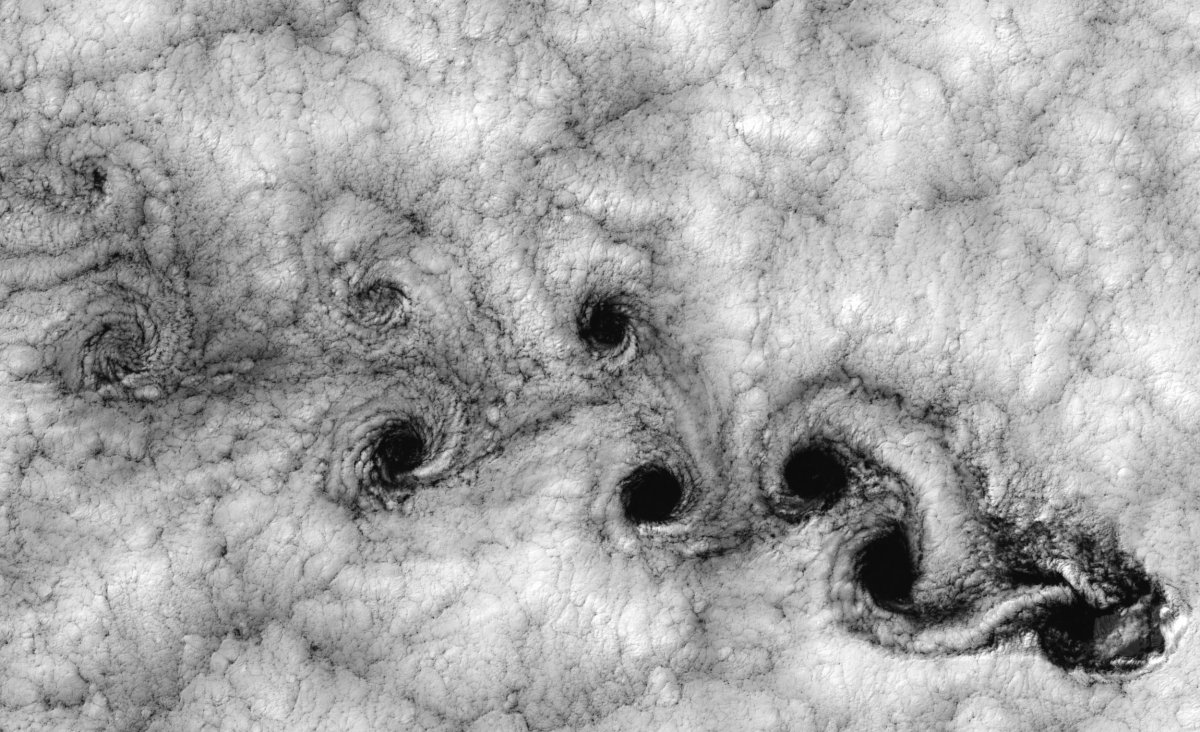Shimmering tendrils of colored light dance above the poles of our planet. Look at the skies from far enough north or south, and you may well catch a glimpse of the dazzling displays. But Earth isn't the only place to watch these mesmerising auroras.
Scientists probing the auroras of Jupiter have uncovered some weird and wonderful quirks. The gas giant's moons, the researchers wrote in a paper published by the journal Science, leave "footprints" on the planet's auroras, like twisting trails of violent vortices that sometimes fork in two.

Auroras appear when charged particles stream onto the upper region of a planet's atmosphere: the ionosphere. "It's not very different from a neon lamp," study author and researcher at Italy's National Institute for Astrophysics, Alessandro Mura, told Newsweek. "Electrons hit the gas and excite it, then the gas shows some luminescence.
"On Jupiter, the electrons come from the magnetosphere: an environment full of plasma and magnetic fields that surround [the planet]."
Astronomers already knew some of Jupiter's moons left "footprints" on the planet's auroras. But it's hard to get a good look at them because of the planet's axial tilt. Enter NASA's Juno probe with its infrared auroral mapper, and an array of new discoveries came to the fore.
The moons Io and Ganymede, for example, orbit Jupiter very closely compared to our moon around Earth. In fact, they travel within Jupiter's surrounding plasma, Mura explained. "Since they are in relative motion with regards to this plasma, they are able to trigger the acceleration of extra electrons," he said.
These speedy electrons stream onto Jupiter's atmosphere, adding to the ionospheric fray. Io's interactions with these electrons seem to create luminous "spots" downstream of a main smudge on both hemispheres. Streaks of turbulent vortices emerge on the Northern half. The phenomenon looks a bit like a "Von Kármán vortex street"—the trail of swirls that emerge when you place a column in flowing liquid. Downstream on Jupiter, these trails appear to fade and sometimes split into pairs.

Although the pattern looks like the vortex street phenomenon—which also appears in clouds—it would be speculation to suggest it is triggered in a similar way, Mura explained. Io's forking trail, he added, might be caused by some other complex system.
Ganymede is a particularly interesting moon as it is incredibly large—bigger than even Mercury—and it has its own magnetosphere. Its footprint, Mura said, reflects the shape of this region. "Basically we had a remote image of the magnetosphere of Ganymede."
As well as producing incredible light shows, auroras help scientists understand the way a planet's magnetosphere interacts with solar wind. On Earth, these interactions affect everything from radio waves to cell phones. On Jupiter, Mura explained, they can shine a light on the path of incoming particles: how much of this plasma is energetic, and where does it come from?
Juno's auroral mapper, he added, will carry on probing the electron displays to uncover their strange secrets.
Uncommon Knowledge
Newsweek is committed to challenging conventional wisdom and finding connections in the search for common ground.
Newsweek is committed to challenging conventional wisdom and finding connections in the search for common ground.
About the writer
Katherine Hignett is a reporter based in London. She currently covers current affairs, health and science. Prior to joining Newsweek ... Read more
To read how Newsweek uses AI as a newsroom tool, Click here.








